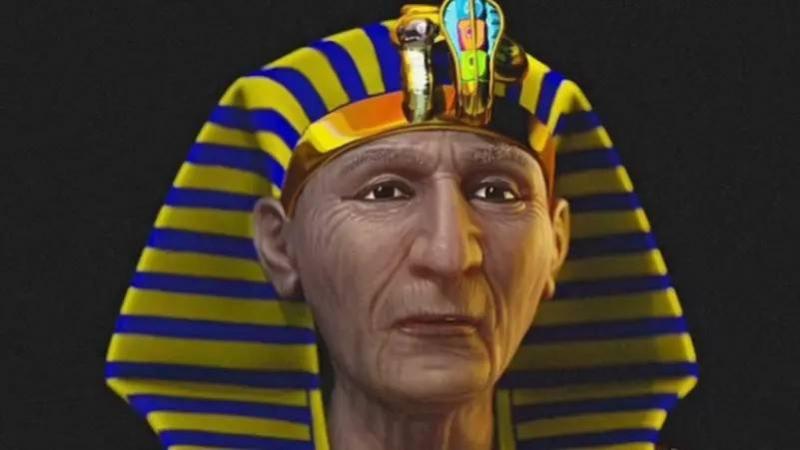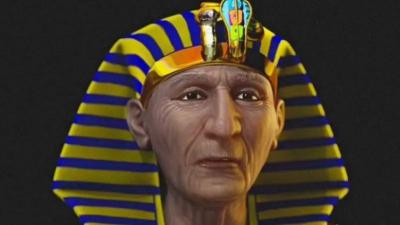A team of scientists has unveiled facial features of the most powerful pharaoh in ancient Egypt, Ramses II, claiming that they reveal distinctive characteristics of his appearance moments before his death. Ramses II, who ruled in the 13th century BC, was the greatest ruler of the nation, renowned for his colossal statues and military exploits during his reign from 1279 to 1213 BC.
The scientists utilized a 3D model of the king's skull, layering soft tissues and skin to reconstruct his appearance at the time of his death, at approximately 90 years old. The realistic image revealed a frail elderly man with a wrinkled face, with some features resembling the giant statues of Ramses that remain in museums, according to a report by the British newspaper "Daily Mail" on June 28, 2024.
Cicero Moraes, a Brazilian graphics expert behind the new project, stated, "In the current study, we conducted an extensive analysis and compared the reconstructed face to the statues of Ramses II." He added, "The goal was to understand the extent to which we can rely on the statues, as many people envision good concordance, but we found it was not the case; the statues indicate a good correlation with the shape of the nose, and in some cases, with the shape of the face."
The statues of Ramses II are characterized by a more refined forehead and lips, and a more defined chin, making the features in the image "not realistic enough." Moraes noted, "We also analyzed data from human measurements and DNA from ancient Egyptian populations, and it seems that all pathways indicate a population made up of many elements that are difficult to unify."
The team selected a skin tone palette seen in ancient Egyptian art as the true color remains unknown. They also created a grayscale version that showed the pharaoh's eyes closed to avoid making judgments about his skin tone; however, the team suggested that criticism would follow soon. Moraes explained, "There are always criticisms of any work published online; just look at the comments on the news and discussions on social networks."
He continued, "I support freedom of expression. Personally, I have never banned anyone on my networks for thinking differently from me or for insulting me, but I also have freedom of expression and generally use it to clarify points and refute what is inconsistent."
The team also employed data from a 1976 study of Ramses's mummified remains, discovered in 1881, which restored tissues and created new wrappings. The study also indicated that Ramses II suffered from a clear dental malocclusion, with significantly worn teeth; the pharaoh also had poor dental and bone health, primarily due to the presence of an abscess, which would have caused him considerable pain.
Despite the king's long life, his muscles showed signs of atrophy, and he had very prominent veins on his forehead. The team aimed to portray the features of aging in the restoration of the king. They compiled data from hundreds of contemporary Egyptians to reveal the potential thickness of the pharaoh's skin in various places across his skull.
Another method involved anatomical distortion, where the face and skull of a living donor—who also had a clear digital overlay—were adjusted to match the dimensions of the mummy. The final result incorporated these methods, appropriately aging it and adding subjective elements like clothing. It unveiled what Moraes termed the "wise" face.




